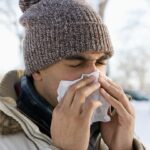 " title="How to prevent the common cold and Flu Infection
" decoding="async" srcset="https://www.medrot.com/wp-content/uploads/2022/02/cold-and-Flu-Infection.jpg 1430w, https://www.medrot.com/wp-content/uploads/2022/02/cold-and-Flu-Infection-300x169.jpg 300w, https://www.medrot.com/wp-content/uploads/2022/02/cold-and-Flu-Infection-1024x576.jpg 1024w, https://www.medrot.com/wp-content/uploads/2022/02/cold-and-Flu-Infection-768x432.jpg 768w" sizes="(max-width: 1430px) 100vw, 1430px" />
" title="How to prevent the common cold and Flu Infection
" decoding="async" srcset="https://www.medrot.com/wp-content/uploads/2022/02/cold-and-Flu-Infection.jpg 1430w, https://www.medrot.com/wp-content/uploads/2022/02/cold-and-Flu-Infection-300x169.jpg 300w, https://www.medrot.com/wp-content/uploads/2022/02/cold-and-Flu-Infection-1024x576.jpg 1024w, https://www.medrot.com/wp-content/uploads/2022/02/cold-and-Flu-Infection-768x432.jpg 768w" sizes="(max-width: 1430px) 100vw, 1430px" />As COVID-19 is still here catching the common cold flu can mislead you and people around by considering it as a Covid-19. Although, it is natural to feel so during a pandemic presumption can lead to worse things. So the best way to stay away from such assumptions is to stay fit and prevent yourself, particularly from cold and flu. A typical cold can make your experience unpleasant for the next few days, from the blocked nose and bothersome cough to the throat infection and temperature. The very worst thing is that it might occur again in a month. Use these tips to avoid catching the flu and remain healthy all year.
Table of Contents
Symptoms of the common cold
The signs of a common cold generally show 1 to 3 days after being exposed to the virus that causes it. The following are examples of signs and symptoms that can vary from person to person:
- Stuffy or runny nose
- Throat irritation
- Cough
- Congestion
- Minor aches and pains throughout the body, as well as a slight headache
- Sneezing
- Fever of a low intensity
Symptoms of the flu frequently begin and intensify in a matter of hours. Colds, on the other hand, have symptoms that develop progressively. The symptoms of this ailment typically start with a sore throat, followed by sneezing, runny nose, and coughing.
Cause of common cold & flu
A common cold can be caused by a variety of viruses, however, rhinoviruses are the most frequent. The virus that causes a cold penetrates your body via your lips, eyes, or nostrils. If someone is unwell coughing or sneezing or talking, the virus can be transmitted by droplets released into the air.
It can also be transferred by exchanging infected objects such as dining utensils, towels, toys, or cellphones with someone that has a cold. You’re more sure to capture a cold if you scratch your eyes, nose, or mouth following such contact. Antibiotics are not required for the flu or the common cold since they’re not induced by a bacterial infection. Both disorders are caused by viral infections that can resolve on their own if the patient’s immune system is in excellent shape.
Prevent common cold and flu
Maintain hygiene
Before approaching your face, thoroughly wash your hands with soap and water. If you don’t have access to soap or water, use a hand sanitizer that has at least 70% alcohol. Keep a safe distance from persons who have the flu or a cold. Sharing dining utensils, combs, and clothing is not a good idea.
Clean your house with disinfectants
The length of time a virus can remain contagious on such surfaces is determined by several parameters including temperature and relative humidity. According to research, flu viruses may persist outside the system for long periods, probably months.
Way of decreasing the risk of infection by disinfecting regularly used things including countertops, workstations, and laptops with solutions like alcohol or bleach. To assure that objects are adequately sanitized, read the directions and follow the prompts attentively when using disinfectants and cleaning the house.
Maintain a safe distance from other people
Keep a respectable distance of 2 feet between you and nearby individuals. If you’re near someone who has the flu, you’re more likely to catch it. A cold virus can spread for up to two weeks. If an acquaintance has a fever and signs of a cold, he is most likely infectious. Even if your buddy seems to be feeling better, he could still infect you. Even if someone is taking medication for a cold, the virus might still spread. Antibiotics are ineffective in treating viral infections.
Consume a variety of healthy foods.
While sanitation is the most crucial, your body will benefit from a variety of healthy foods. Reduce your intake of sugar, process metals, and fried foods while increasing your intake of nutrient-dense foods.
Keep in mind that there is no scientific evidence that consuming a certain food would keep you healthy in the long run. A better diet can help your immune system battle infections by providing nutrition. You can’t expect to be healthy if you eat a handful of fruits and don’t wash your hands the whole that prevents colds, it is best to use a blend of measures.
Infections can be prevented by using paper tissues.
Always keep a supply of disposable paper wipes on hand. When you are sneezing or coughing, cover your lips and nose. Use a tissue just once and throw it away. These are the most important guidelines for infection control. In this approach, you can reduce the danger of spreading sickness to others at home or in public areas. Viruses that cause the flu or the common cold spread through droplets of secretion, particularly when an infected person coughs or sneezes. Viruses can survive outside of the human body for many hours. You can prevent the spread of such particles by wrapping your mouth and nose with a disposable paper napkin. Other persons may be protected from illness by using a simple paper tissue.
Do not spread the infection to others.
Stay in the house if you already have any flu symptoms. The flu vaccine protects not just you, but also people who spend a lot of time with you. In big groups of individuals, such as elementary schools, colleges, or trains and buses, the chance of infection is higher. As a result, once you notice the first symptoms, stay away from other people to prevent spreading the infection. You can infect others as long as the signs are there!
Make sure you drink plenty of water.
Prevent dehydration by drinking plenty of water. Men should gulp down 13 eight-ounce servings of liquids per day, while women must drink approximately 9 eight-ounce servings each day. This includes water as well as fluids consumed through food. Water could also inhibit dryness in your nose or throat, which would also save you from acquiring a cold.






